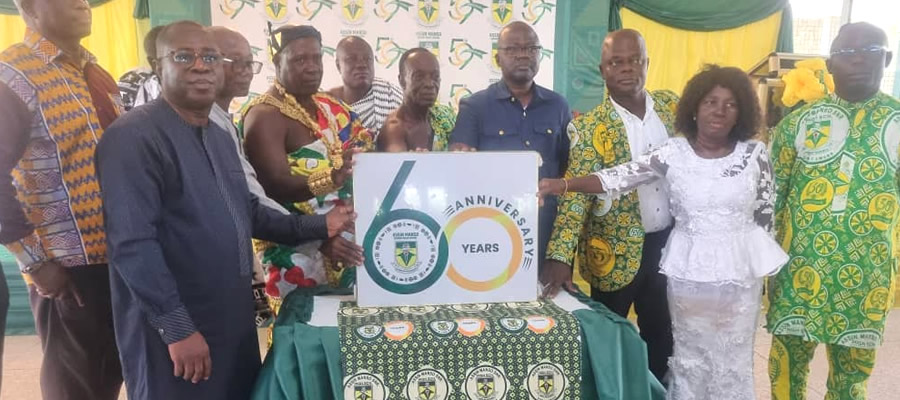

Location & Size
The Assin Foso Municipal Assembly is one of the twenty-two (22) Administrative MMDAs in the Central Region which is located at the Northern corner of the Region. The Municipality was created by an Act of Parliament in 2017 through the Legislative Instrument LI 2300 of 2017, following the split of the then Assin North Municipal Assembly into Assin Foso Municipal Assembly and Assin North District Assembly.
The Municipality lies within Longitudes 1 0 05’ East and 1 0 25’ West and latitudes 6 0 05’ North and 6 04’ South. The Municipality Assin Foso covers an area of about 1,500 sq. km. and comprises about 1000 settlements including Assin Foso (the Capital), Assin Nyankumasi, Assin Akonfudi, Assin Bereku, Assin Praso, Assin Kushea and others.
The Assin Foso Municipality shares common boundaries with Twifo Atti Morkwa (formerly Twifo Hemang Lower Denkyira) on the west, Assin South District on the south, Asikuma Odoben Brakwa and Ajumako Enyan Esiam Districts on the east, Upper Denkyira East Municipal on the north-west and Ashanti Region on the north.
Topology & Drainage
The Municipality is characterized by undulating topography and has an average height of about 200m above sea level. Flood-prone plains of rivers and streams lay low below sea level. The Municipality has numerous small rivers and streams. The main rivers include the Pra, Offin, Betinsin and Fum Swamps also abound in which serve as potentials for fish farming and dry season vegetable and rice farming.
Climate & Vegetation
Assin Foso Municipal falls within the moist tropical forest, mainly deciduous forest. The area has an annual rainfall between 1500 to 2000mm. Annual temperatures are high and range between 30°c from March to April and about 26°c in August. Average relative humidity is high ranging from 60% to 70%. The ecological balance allows for a variety of food, cash and non-traditional export crops to be grown. The Municipality comes under relative cool and moist south-west monsoon winds that blow from the Atlantic for most part of the year - between December and February. However, the dry hamattan or North-East Trade Winds blow from the North. Its dissipating effects, however is greatly reduced by long passage over the forest zone. Rainfall pattern is bi-modal.
The major rainy season starts from April - July corresponding with the major farming season and the minor rainy season starts from November - September. The Assin Foso Municipal has about five (5) Forest Reserves which include the Bimpong Forest Reserve, the Supong Forest Reserve, the Assin Forest Reserve, Wawahi Forest Reserve and Krochua Forest Reserve, Baku Forest Reserve. These reserves serve as protective cover to some of the major rivers that drain . The Kakum Forest Reserve has been developed into a tourist site which generates foreign exchange and income for the local economy and the nation as a whole.
Geology & Soil
The land area is underlain by geological strata of Cape Coast Granite Complex belonging to the pre-Cambrian Platform. It comprises basically granites, grandiosities and adamellites. It is schistose in some communities and very massive in others. It also includes several components ranging in composition from grandiorites to granites and their migmatitic varieties. The predominant mica minerals are muscovite and biotite. 60% of the communities however are underlain by the lower Birrimian Phyllites, which are often associated with extensive decomposition basins and thick weathering mantles. These are indicative in the areas covered under the Awisem Area Council.
The Municipality is endowed with a number of resources that are potentials for development. Some of these potential resources are tapped whilst others are untapped. The resources include gold deposits, rocks, sand and stone deposits, clay deposits, and forest resources (especially timber). Gold deposits are located at Awisem, and others. Deposits of diamonds are also located at Awisem, Akonfudi Camp and other places. The Assembly is endowed with potentially rich forest resources especially in timber. Timber species such as Odum, Mahogany and Wawa are being exploited by timber firms with concession in the forest.
Date Created : 11/30/2017 2:14:26 AM











 facebook
facebook
 twitter
twitter
 Youtube
Youtube
 +233 593 831 280
+233 593 831 280 0800 430 430
0800 430 430 GPS: GE-231-4383
GPS: GE-231-4383 info@ghanadistricts.com
info@ghanadistricts.com Box GP1044, Accra, Ghana
Box GP1044, Accra, Ghana